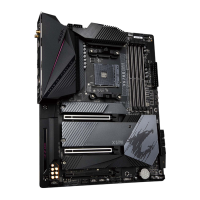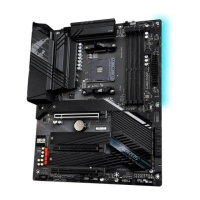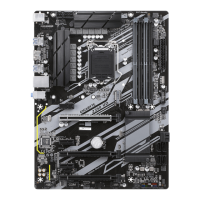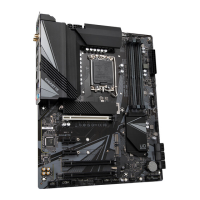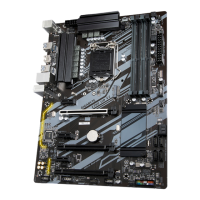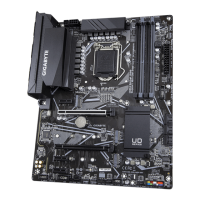PleasevisitGIGABYTE'swebsitefordetailsonconguringaRAIDarray.
Install the RAID driver and operating system
With the correct BIOS settings, you are ready to install the operating system.
Installing the Operating System
Assome operatingsystems already include RAID driver,you do not need to install separate RAID driver
during the Windows installation process. After the operating system is installed, we recommend that you install
all required drivers from the GIGABYTE APP Center to ensure system performance and compatibility. If the
operatingsystemtobeinstalledrequiresthatyouprovideadditionalRAIDdriverduringtheOSinstallation
process, please refer to the steps below:
1. Go to GIGABYTE's website, browse to the motherboard model's web page, download the AMD RAID
Preinstall DriverleontheSupport\Download\SATA RAID/AHCIpage,unziptheleandcopytheles
to your USB thumb drive.
2. Boot from the Windows setup disc and perform standard OS installation steps. When the screen requesting
you to load the driver appears, select Browse.
3. Insert the USB thumb drive and then browse to the location of the driver. Select AMD-RAID Bottom
DevicerstandclickNext to load the driver. Then select AMD-RAID Controller and click Next to load the
driver. Finally, continue the OS installation.
C.UEFIRAIDConguration
Steps:
1. In BIOS Setup, go to Boot and set CSM Support to Disabled. Save the changes and exit BIOS Setup.
2. After the system reboot, enter BIOS Setup again. Then enter the Settings\RAIDXpert2 Conguration
Utility sub-menu.
3. On the RAIDXpert2CongurationUtility screen, press <Enter> on Array Management to enter the Create
Arrayscreen.Then,selectaRAIDlevel.RAIDlevelssupportedincludeRAID0,RAID1,andRAID10(the
selectionsavailabledependonthenumberoftheharddrivesbeinginstalled).Next,press<Enter>onSelect
Physical Disks to enter the Select Physical Disks screen.
4. On the Select Physical Disksscreen,selecttheharddrivestobeincludedintheRAIDarrayandsetthem
to Enabled.Next,usethedownarrowkeytomovetoApply Changes and press <Enter>. Then return to
the previous screen and set the Array Size, Array Size Unit, Read Cache Policy and Write Cache Policy.
5. After setting the capacity, move to Create Array and press <Enter> to begin.
6. After completing, you'll be brought back to the Array Management screen. Under Manage Array Properties
youcanseethenewRAIDvolumeandinformationonRAIDlevel,arrayname,arraycapacity,etc.
- 40 -
41 / 45 40 / 43 41 / 45 40 / 43 41 / 45
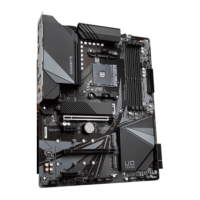
